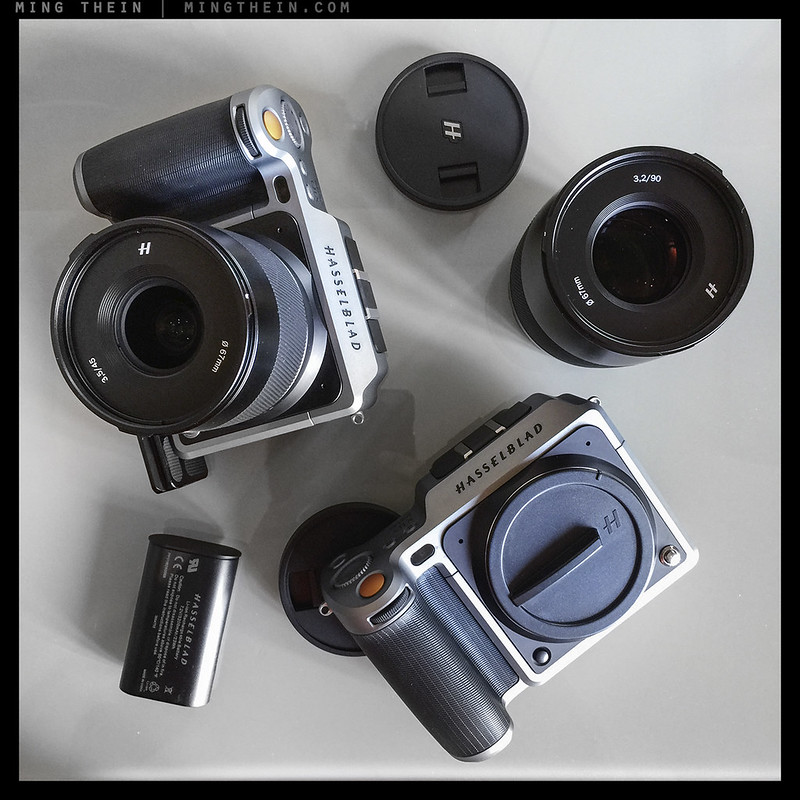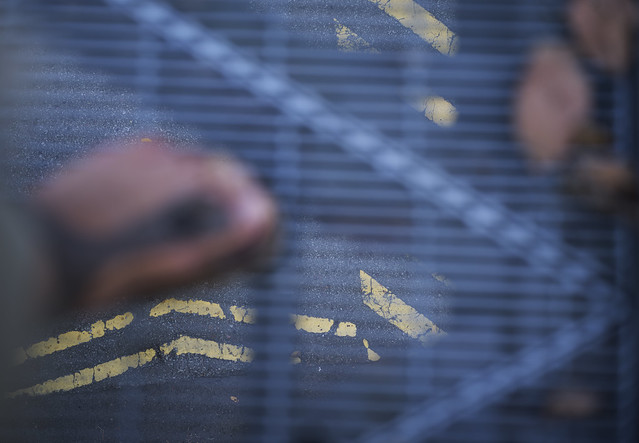Ming Thein has updated his
X1D report and added a gallery of full-sized sample images.

Most of the traffic, uncertainty and questions online have been around a few things, and I’ll address them now:
- The EVF. It’s good enough – no, not as good as the Leica SL, but I honestly don’t see that much of a difference between this and my Leica Q in terms of detail, either. Refresh rate is a little bit lower, but comparable to the M4/3 cameras in the normal speed setting, significantly faster than the H6’s live view, and another planet from the H5’s live view. It needs contrast and brightness adjustment, but that’s coming in future firmware.
- Manual focusing: easy, and made easier by a single button to go to 100%, or double tap anywhere in the LV image to go to 100% at that point.
- Sensor image quality: at least identical to, if not slightly better than, the H5/6 – I think it’s because of accuracy of focus more than anything or newer lens designs. High ISOs are perhaps half a stop cleaner, and there’s now both auto ISO, 12k and 25k settings. I have requested the ability to adjust the auto-parameters. Color, dynamic range, and tonal response are identical to the H5/6 – which in my opinion, is the best you can get, period. Think 14-15 stops and almost zero profiling required, with a very natural highlight rolloff. See for yourself, in any case.
- Lens quality: nothing to worry about here. I think they may actually be slightly better than the H lenses. I am very impressed with the performance overall. Both of mine are prototypes – lenses and cameras – but I’m finding the 45mm to be better than the MTF charts suggest, and the 90mm slightly worse (though remember that the 90mm suggests Otus-grade performance). There is very little CA or any kind, and given the architecture relies on Phocus on your PC to do the correction, I’m impressed – since I’m using ACR to convert, and there are no Adobe profiles yet.
- Autofocus: is faster than expected, but not Q-fast (I think best in class). It’s closer to GR-fast. You can’t move the point yet, but that’s coming also. However: we are talking about a camera with non-final firmware. I am told there are significant speed updates in the next FW update in a few days.
- Use in low light: AF doesn’t slow down that much, but can experience either hunting, failure to lock or false positives. I’ve found this is due to the same limitation as most CDAF cameras: if there are point sources in the frame that overexpose, they will form a 100/0 contrast zone that the camera cannot lock on to – by definition, highest contrast will be greatest defocus + brightness. Pick targets sensibly and it’s fine.
- Speed in operation: does not suggest there are files that big flying around (right now, there’s no compression and we’re looking at the 110MB/file range – 16 bit).
- UI and touch screen: you don’t actually need to use it very much; the camera is simple enough that the hard buttons do everything you need. But it’s the same UI as the H6, only smoother – it seems the X1D has a more capable video processor or something because animations, scrolling and operation are just a lot slicker overall. Think of the difference between an iPhone 4 and iPhone 6S in terms of UI speed…
- Build quality, haptics: one solid, solid block of metal. Nothing, anywhere, feels plasticky and/or hollow. Everything that looks like metal is metal, and some other parts, too. It actually feels better built than the H cameras; you touch rubber and a metal unibody, not plastic and a detachable grip. A note on weather sealing: every port is tightly gasketed, and the lenses require some effort to mount/unmount because the gasket fits so tightly against the mount. I would be far more confident in inclement weather with this than the H (too many components, no seals other than tightness of fit between them)
- Battery life is comparable to my H5: about 3 hours total operation time. Three batteries will get you through a heavy day, assuming you never turn the power off. Power saving is aggressive and the battery is huge (3200mAH) – which probably helps. Charging time is unfortunately also similar to the H5/6, which is slow.
- Nikon TTL: no idea yet, don’t have a speedlight with me. Note however that the duration for maximum power for most of their flashguns is about 1/900s, so you will see some loss at 1/2000.
- Overall impressions: at the moment, it falls on the side of a deliberate, paced shooting tool rather than a run and gun street machine – but given the expectation is the thing performs like M4/3, that’s perhaps a bit unfair. I certainly think it’s no slower or less responsive than say a Sony A7RII in use – the bits that are slow we can live with; responsiveness is good though I’m told will improve with an EFC mode (not full electronic; rear curtain remains mechanical) that doesn’t require the leaf shutter to close first to expose. Image quality is first class plus: everything we expected, and more. More features will also be implemented in due course – a firmware update is supposedly out for testers tomorrow.
- Let me clarify this statement for forum pedants who have been taking issue with the verbiage: firstly, a mechanical shutter system has to open and close to determine the exposure. Secondly, in a mirrorless camera, the shutter has to close then open then close as it has to be open to expose the sensor for live view. Thirdly, I’m told that MQ mode will use an electronic front curtain to and the leaf shutter will only close to end the exposure, bypassing the open and shut stage. Finally, as I am not aware of a specific terminology for the closing of a leaf shutter, ‘rear curtain’ is what I used for ease of understanding – and also the terminology used to describe when the flash fires at the end of the exposure, regardless of shutter type.
- Samples: click thumbnails below to go to the flickr page which will also have full resolution available if you click on the image itself, or one of the options on the lower right of the image container. (Update: links to full size fixed). I will add more to this album on flickr in due course. Images are processed with the same workflow I use for my H5/6 files – ACR recognizes the camera as a H6D. MT
from
blog.mingthein.com
 SaveSave
SaveSave



No comments:
Post a Comment